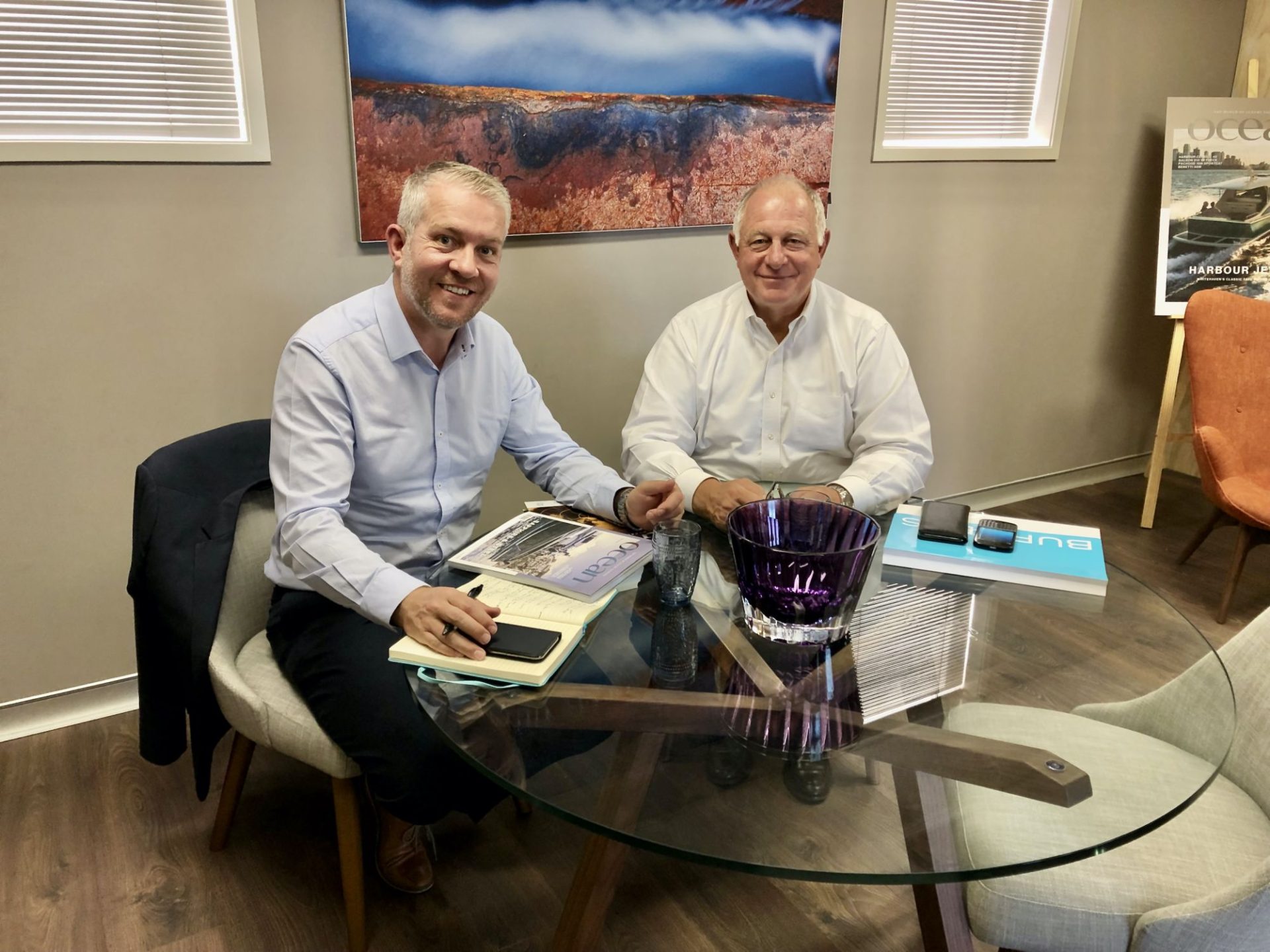Course correction
After a tumultuous year for almost every business in a COVID-ravaged economic environment, Burgess Yachts reveals how they’ve managed the challenges.
Written by Hillary Buckman
08 June 2021
Since 1975, Burgess Yachts has crafted a name for itself, prioritising a platform that consistently puts its clients first.
As one multiple yacht owner put it: “Burgess looks at their clients as long‑term partners in the business, rather than just another transaction, which is why they are successful.”
“It’s been an absolute pleasure doing business with Burgess over the past 19 years,” said another owner.
But despite over four decades of consistent work cementing their reputation, the brand, and almost the entire marine industry, hasn’t been immune to the pandemic. And yet, Burgess has appeared to overcome it.
The successful response involved making tough decisions quickly and consolidating resources and capital to emerge leaner and, importantly, well-placed for the recovery, which is proving stronger than initially forecast.
In conversation with Burgess CEO Jonathan Beckett and Head of Burgess Australia Chris Santon, we ask them to outline the company’s approach in these demanding times and if they are ready for the rebound in demand.
Ocean magazine: First, can we look at the extraordinary superyacht sales figures reported for last December – the second strongest single month for brokerage sales since 2009. The theory is COVID has galvanised buyers, but does that explain the surge or is there something else going on?
Jonathan Beckett: Last year was a strange one indeed; one where we had to navigate unchartered territory in all sectors of our lives – professional and personal. As a business, we had to plan for the worst and simply hope for the best.
At the beginning of the pandemic, we saw a lot of uncertainty, but we started to see a change in activity as mid-summer approached. Interest increased, and by the fourth quarter of the year, the brokerage market witnessed one of its most successful years to date.
This could be a result of the lack of action in the first half of the year coupled with an easing of lockdown restrictions that allowed prospective buyers to inspect yachts.
There was also a pent-up demand for freedom and travel – there is no safer means of transport than a private yacht.
So the market itself has shifted. Is this a short- or long-term dynamic?
My view is the change is here to stay. The industry needed a shake-up and that has certainly happened. We’ve all had to think of inventive ways to continue our businesses despite lockdowns and an uncertain marketplace.
Is it fair to say the marine industry needed to mature from the cottage industry it’s known as to a more regulated and sophisticated structure?
The change was already happening and would have occurred whether COVID hit or not. The real shift is in the way brokerages communicate with clients – nothing will ever replace face-to-face, but when this wasn’t possible, everyone had to up their digital game.
How were the challenges during the crisis effectively managed?
We were forced into analysing every sector of our business, which at times made for painful reading, but it was a necessary activity. We rethought our future plans, shifted our efforts into digital and also took the time to reflect.
You can measure the might of a company in the face of adversity – the true team spirit of Burgess got us through this tough time. Arguably, the past year has been tougher for smaller businesses. I’m sure they have seen greater casualties.
It all begs comparison to 2009, but aren’t there big differences in the fundamental macro-economic conditions?
Financial crashes have happened before and will again; there’s generally a tried and tested road map out.
The major difference with the pandemic is we haven’t seen this before and, at the moment at least, it’s proving a moving beast. But there are signs of a way out with the vaccination program.
Economists are predicting a full recovery by spring 2022, but let’s not forget, we’ve not only had the pandemic to deal with – Britain has had Brexit, and there’s been the leadership change in the United States too.
Will the strong sales performance continue into this year?
The number of inquiries and our current pipeline are both encouraging and suggest that the high we ended on in 2020 will continue into 2021.
So what has been the key to Burgess’s successful strategy in navigating the various stages of the pandemic?
We’ve communicated transparently with clients and staff throughout. Morale in the team remains high and our output hasn’t suffered.
What lessons have you learned on the charter side of the business?
This has been a tough time for charter, however as countries began opening their borders, we started to see an increase in inquiries.
We’ve enhanced our protocols and, with COVID-safe procedures in place, clients feel comfortable knowing that their safety is our priority. We want them to enjoy their time away, and this hasn’t changed. We’ve also reworked contracts to include COVID clauses.
We’re optimistic 2021 will be busy. Many of our yachts are already fully booked for summer, either with charters postponed from last summer or new bookings.
Turning to our region, what’s your perspective on the strong growth in sales and charter in Australia and New Zealand?
Clients in this region have come through the pandemic reasonably unscathed so far. Still, early on there were severe social restrictions and lockdowns, which moved people to want to have new experiences and try new things. For those potential yacht buyers who were undecided about buying a yacht, this shift was instrumental in making the dream a reality.
As we came through winter in the region and headed toward spring and summer, many wanted to be ready to have experiences they’d only ever talked about before.
Of course, with the added travel restrictions, the yacht deals we have completed for our clients in Australia and New Zealand for yachts up to 60 metres are not for them to be used overseas. These yachts are either here already or are on their way, so the yacht market will see a considerable increase in overall length.
What are you noticing about new sales enquiries – has there been an increase in people who haven’t owned a boat before?
The biggest change we’ve seen in terms of first-time yacht buyers – and even seasoned yacht owners looking for an upgrade – is that they’re willing to purchase sight-unseen to have the experiences mentioned and become owners of a large yacht. This has never been seen before, especially for yacht buyers in this region.
We also have an extensive digital platform that we’ve been able to provide to yacht enquirers and buyers, which has been a powerful counterpoint to the travel restrictions hindering yacht visits. For purchases to be concluded without clients stepping on board is very new.
What about Australians who have chartered overseas? Are they more interested in chartering locally?
We’re actively working on marketing this, predominantly for the visiting foreign-flagged yachts, whether we manage them for charter or not. They’re often larger in size than what is available locally in Australia, and this is of great interest to those charterers who typically book yachts over 50 metres.
Australians are chartering more than they used to and differently; they’re booking local yachts for week-long charters in and around Sydney. This wasn’t as common in the past, but there has been a flurry of activity this summer.
Chris, there’s a perception that Burgess in Australia is well-known for its involvement in the 50-metre-plus segment of the market, but you’re also active in the 30-metre bracket.
Chris Santon: Globally, we generally work in the 30-metre-plus range. With a few exceptions, the 30–60-metre mark is a sweet spot for our Australian and New Zealand clients. This is especially the case for me here in Australia, where the cruising and infrastructure for larger yachts aren’t as abundant as elsewhere in the world.
For that reason, many of the deals I work on don’t generally exceed 50 metres for local clients. Of course, there are exceptions. In the last quarter of 2020, the team brokered several deals in the 50-metre-plus size. All are heading to this region to stay for the foreseeable future.
This article originally appeared in Ocean #94. To subscribe to Ocean magazine, click here.









